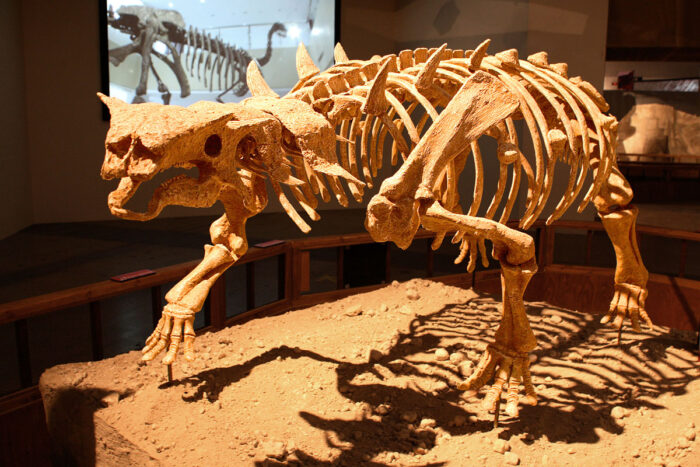The fearsome roar of a dinosaur. ROOOOOOAAAAAAAAAAAAOOOOORRRRRRRRR!!
It is pretty iconic.
But what if instead of roaring, dinosaurs chirped? Or cooed? Chittered? Purred?
That might sound silly, but evidence is showing that it is possible that these sounds—not roars—are they ones that dinosaurs really made.
There has already been research claiming that the T. rex would've rumbled or even honked rather than roar. A recent BBC documentary tried to recreate the sound like this (this clip sounds better with headphones because the sounds are low rumbles).
This 're-creation' is only a guess because soft tissues that make the voice boxes and larynxes of animals almost never fossilize so it's hard to know for sure what sounds they made. Instead, the researchers have looked to the closest living relatives of dinosaurs—birds and reptiles like crocodiles—for a window into how they sounded.
But a new theory about a 2005 fossil from Mongolia suggests that we have something never seen before: a fossilized larynx (voice box) on a non-avian dinosaur.
(Avian dinosaurs are the direct ancestors of modern birds, generally this means two-legged predators known as theropods. Non-avian dinos included four-legged herbivores like long-necked sauropods and the horned ceratopsians.)
Paleontologists from Hokkaido University Museum and the American Museum of Natural History believe they have discovered parts of a voice box of an ankylosaur called Pinacosaurus. And according to their theories, these bones show incredible similarities to those found in both reptiles and birds.
So what did this dinosaur sound like?
Good question!
Still anyone's guess

A mounted skeleton of a Pinacosaurus. (Wikimedia Commons)
Though finding this part of a dinosaur in a fossil is remarkable, understanding what it sounded like is not as simple as taking the fossil and blowing into it like some musical instrument. But they can use the structure of the bones to make educated guesses.
Again, researchers are looking at modern animals to see how the larynx of the Pinacosaurus compares to them. First off, the structures in reptiles and birds are quite different. In fact the bird's voice box is called a syrinx and is capable of making two calls at once!
The larynx of this ankylosaur was a little in between both animals. This would mean that a few different calls were possible.
Perhaps it rumbled like a crocodile does. Today, paleontologists are quite certain that many dinosaurs made sounds similar to these powerful reptiles. (In fact, the rumbles of a crocodile were used to figure out the proposed T. rex sounds in the video above!)
But it is also just as possible that the Pinacosaurus could have made a series of higher-pitched chirps or a sharp, loud call. Imagine hearing something that sounds like a parrot squawking behind the trees ... and then seeing an ankylosaur emerge!
Ultimately, it is impossible to know exactly what these beasts sounded like. But by looking to hard facts, like these fossil, and comparing them to what we find in modern animals, we're likely to get something more accurate, and more interesting, than any Hollywood movie has given us so far.
Call it Jurassic Squawk!
 An artist's concept of a Pinacosaurus with the location of the fossil placed where it would be in its throat. (Art by Tatsuya Shinmura)
An artist's concept of a Pinacosaurus with the location of the fossil placed where it would be in its throat. (Art by Tatsuya Shinmura)









it sounds like someone slurping a smoothie…not that ominous!
❓
☺️thats really cool because I love Dinosaurs🦕🦖😁